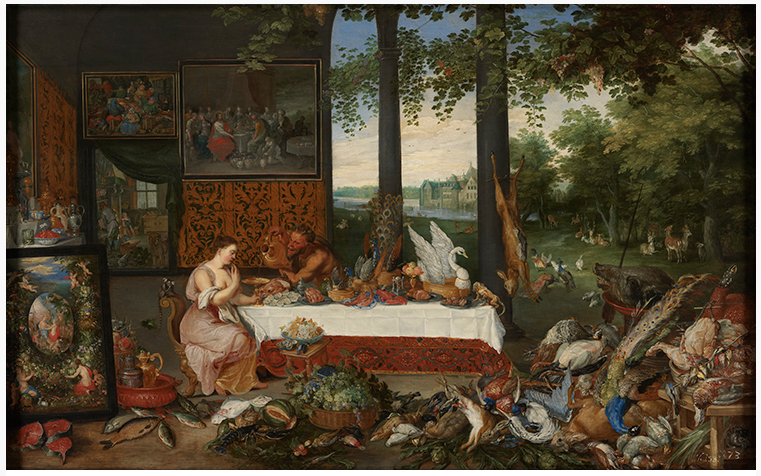GLTs in Baroque Art: a Monkey Mystery!
At Save the Golden Lion Tamarin, we have quite the eye for lion tamarins, but we were surprised to see one turn up in a painting currently at the Phillip’s Gallery in Washington, DC… in a European painting from 1625!
In the original series of paintings titled The Five Senses (1617-1618), Jan Brueghel the Elder and Peter Paul Rubens created five vivid visualizations of the human senses. In each scene items and animals that represent aspects of each sense surround a woman. Brueghel was responsible for the landscapes, and Rubens added the figures. In 1625, Brueghel’s son, Jan Brueghel the Younger, duplicated the entire series, albeit removing and adding some details that we thought interesting. Can you spot the differences?
Jan Brueghel the Elder & Peter Paul Rubens - The Five Senses: Taste, 1618

Jan Brueghel the Younger - The Five Senses: Taste, 1625

It’s difficult to see, but at the right end of the table just after the swan, is a golden lion tamarin! The GLT is missing in the 1618 version.
Close up of Jan Brueghel the Younger - The Five Senses: Taste, 1625

This is not the only example of a GLT making its way into a painting! Jan Brueghel the Elder included them in another of his paintings.
Jan Brueghel the Elder - Monkeys Feasting, 1621

How did these monkeys, especially the GLTs, make their way to Europe in the early 1600s? We can only assume these animals were part of the pet trade and were brought to Europe for a menagerie or private collection.
A special thanks to Michele De Shazo, Assistant Registrar for Visual Resources and Collection at the Phillip’s Collection, for her help in getting to the bottom of this monkey mystery!
